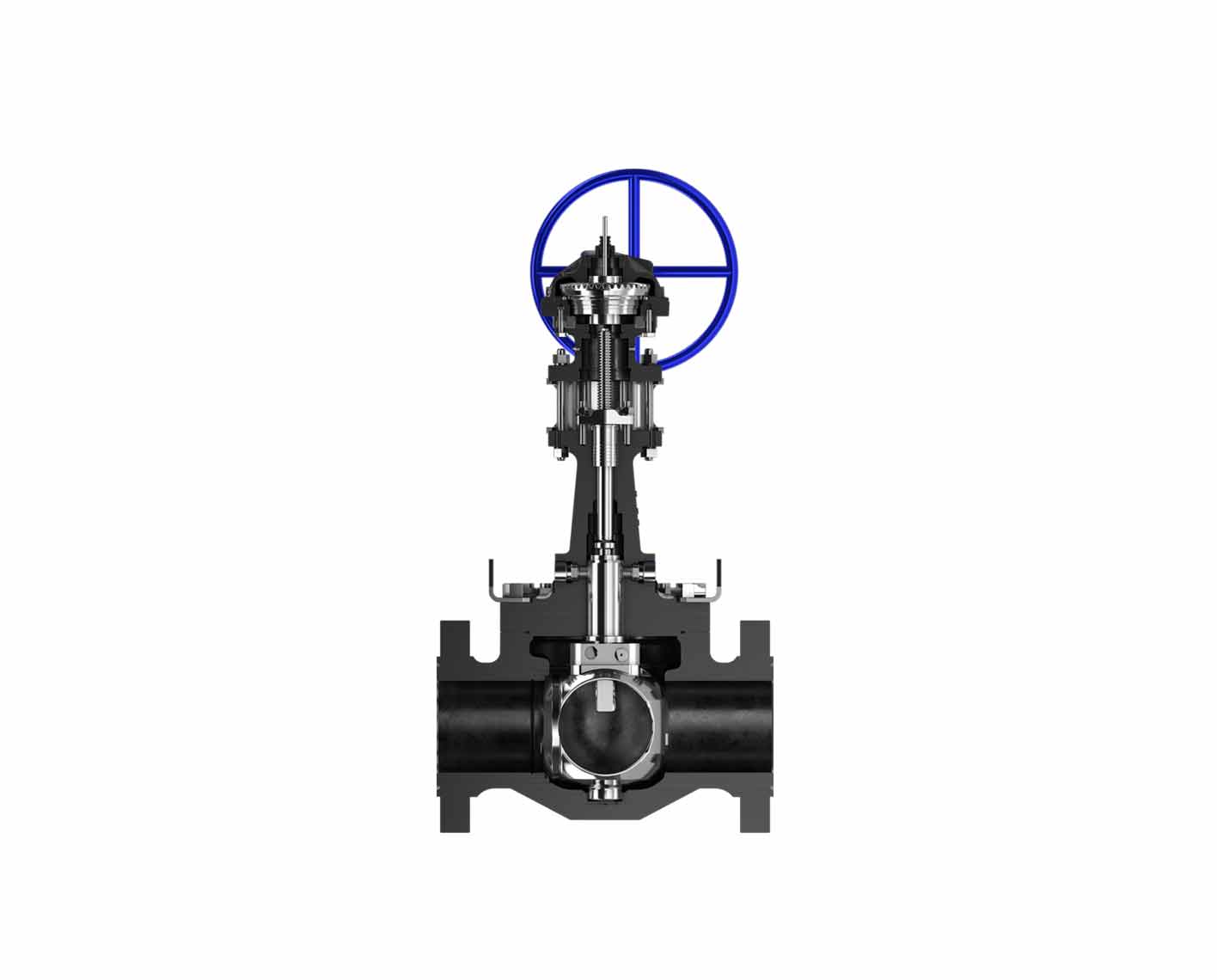Orbit
Rising stem ball valve

The Orbit™ rising stem ball valve's unique tilt-and-turn design reduces rubbing between sealing surfaces and delivers reliable performance. It is the proven technology for demanding process conditions, including high-temperature, critical isolation for molecular sieve switching services. This legacy of innovation began with the first patent issued to The Oilwell Improvements Company in 1935. The patented tilt-and-turn design by Alfred Heggem is the forerunner to all ball valves today.
Decades later, the same engineering technology is still used to safeguard against seat rubbing—a leading reason why Orbit valves are world-renowned for high integrity and long service life.
Standardized low-emissions stem packing
Going forward, our top-tier low-emissions stem packing will be a standard feature on Orbit valves for all pressure sizes and classes. Making this high-performance packing our default offering is part of our ongoing commitment to support operators in achieving their emission reduction objectives. These packings are API Standard 622, ISO 15848-1, and API Standard 607 certified. Orbit Low-E™ certified low emissions valves with their high-performance gaskets will remain an optional upgrade.
Changes to the standard product offering are summarized below:
- Valves historically supplied with closed bonnets and GP6 packing will now have an outside screw and yoke (OS&Y) bonnet, including improved packing retention and low-emissions graphite packing with Teflon® (500-degF configuration). Closed bonnets and GP6 packing remain available on request.
- Valves historically provided with OS&Y and Tibronile packing will now have improved low-emissions graphite packing and enhanced packing retention.
- Closed-bonnet ammonia service valves (previously supplied with T5 trim and GP19 stem packing) will be provided as part of the standard OS&Y offering with T3 trim and low-emissions graphite packing with Teflon.
Teflon is a registered trademark of E.I. du Pont de Nemours and Company.
Ideal for applications that require zero leakage and frequent operation, Orbit rising stem ball valves are used globally in gas processing plants employing molecular sieve systems in switching service. They are also used for
- flowlines
- meter isolation
- dryer switching
- block and bypass
- product segregation
- emergency shutdown
- suction and discharge isolation
- heat-transfer fluids and hot oil
- hydrogen, CCUS, renewable fuels, and ammonia service.
Every Orbit valve incorporates a proven tilt-then-turn operation that eliminates seat rubbing during both opening and closing. The result is easy, low-torque valve operation and long-term reliable performance.
When the valve is closed, the core is mechanically wedged tightly against the seat, ensuring positive shutoff. When the valve begins to open, the core tilts away from the seat and line flow passes uniformly around the core face, eliminating the localized high-velocity flow that typically creates uneven seat wear in ordinary ball, gate, and plug valves. The core then rotates to the fully open position.
New sealing elements have earned certification to ISO 15848 Tightness Class AH and API Standard 622 for both high- and low-temperature applications. By integrating advanced graphite-based technology with the proven tilt-then-turn operation, Orbit valves have set a new benchmark for fugitive-emissions performance at temperature extremes while increasing valve life even under dynamic cycling conditions.
| Features | Standards |
|
|
|
|
|
|
|
|
|
|
|
|
|
|
|
|
|
|
|
|
Orbit valves were submitted to ISO 15848-1 type testing and earned certification for their industry-leading performance, achieving the best possible ISO 15848-1 tightness class rating of AH at the limits of their design temperature:
- High-temperature packing: ISO FE AH—CO2—SSA 0—t (RT, 400 degC)—CL2500—ISO 15848-1
- Low-temperature packing: ISO FE AH—CO3—SSA 3—t (RT, –50 degC)—CL2500—ISO 15848-1.
What about actuation and instrumentation?
SLB provides tailored packages that include valves, actuators, and instrumentation. Our actuation and instrumentation services for Orbit valves deliver reliable, trouble-free on-off operation. More than 400 instrumentation systems are available as standard; in addition, customized packages can be provided to meet your requirements.
When SLB provides both the valve and actuator, you have a single source responsible for the complete package:
- operations and maintenance advice
- repair parts and field service
- warranty.

